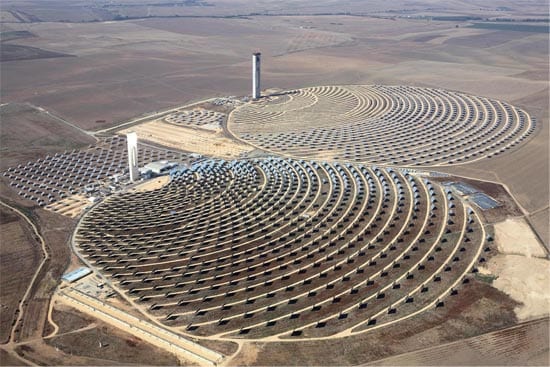 Last week’s announcement by Alinta to close its 544MW Northern and 240MW Playford B coal fired power stations presents the opportunity to get on with building a concentrated solar power (CSP) plant at Port Augusta.
Last week’s announcement by Alinta to close its 544MW Northern and 240MW Playford B coal fired power stations presents the opportunity to get on with building a concentrated solar power (CSP) plant at Port Augusta.
Beyond Zero Emissions in conjunction with the University of Melbourne’s Energy Institute showed a number of years ago that 100 per cent renewable energy is possible in Australia, and worked with the Port Augusta local council and community to highlight the case for CSP to be built there. Beyond Zero Emissions also presented its research to a South Australian parliamentary inquiry into solar thermal in 2013.
Alinta’s recent detailed strategic review led to their decision to shut down their coal plants, but the decision would most certainly have been influenced by the recent feasibility study into CSP at Port Augusta, jointly funded by ARENA, Alinta and the South Australian Government. The decision is just another nail in the coffin for coal generation in Australia, and confirms that coal generation is not only uneconomic but is also something that communities ultimately do not want. They want clean sources of energy, renewable energy projects that are profitable and generate jobs.
The decision also shows that renewables are well and truly outcompeting coal and gas for energy generation in South Australia and in Australia more generally. State governments around Australia are setting and implementing ambitious and achievable renewable energy targets.
It is now an opportunity for state governments to develop state/territory renewable energy targets that outbid the national RET, just as they did in the mid 2000s in developing a national emissions trading scheme at state/territory level, that ultimately pushed John Howard to announce a federal scheme. The Queensland Minister for Energy and Water this week joined SA in setting ambitious renewable energy targets, announcing a Queensland Renewable Energy target of 50% by 2030 and 1 million solar rooftops by 2020.
Despite the best efforts of the Abbott government to constrain renewable energy in Australia, households continue to strive for energy freedom, where with greater energy efficiency and rooftop solar, homes can produce more energy than they consume and become renewable energy power stations.
Even the big energy retailers may finally be seeing the writing on the wall. Gas is not a viable option given the recent and ongoing large price increases as a consequence of Australia linking to international gas markets. Nuclear is not an option for a number of reasons, including the long lead time to build a nuclear plant, as well as the ongoing high costs and lack of an adequate solution to store nuclear waste.
With SA moving above 40 per cent penetration of rooftop solar and wind, CSP is well placed to complement these trends and build plants of scale to meet energy on demand from the grid. Beyond Zero Emissions and others have already shown that with CSP with molten salt storage, energy can be stored and dispatched on demand, day or night.
With CSP plants being built in Chile, Morocco, Spain and the US, Australia is the only inhabited continent that is not investing in concentrated solar thermal technology. CSP plants that have gone online in the last year have generated power 24 hours a day, 7 days a week, day in and day out. It is time we joined the rest of the world in investing in this technology.
Building CSP at Port Augusta would provide jobs for the 400 odd workers who will be unemployed with the closure of the Northern and Playford B coal plants. This is critical given the closure or winding back of other key industries in South Australia, including shipbuilding and motor vehicle manufacturing. What is going to happen to the 20,000 odd jobs in the motor vehicle industry in SA, the 1600 odd jobs in SA related to shipbuilding and now the 400 odd jobs in coal in Port Augusta?
The Zero Carbon Australia Stationary Energy Plan showed that we can shift Australia to 100 per cent renewable energy using a mix of concentrated solar power, wind, and bio energy at a cost of $8 per household per week. Since that plan was produced, the cost of renewables has reduced further, making the overall costs of implementation much lower. The original plan also did not include pump storage hydro, solar PV and battery storage, all of which would be included today, also bringing costs down.
The transition to CSP is a natural part of the transition that communities like Port Augusta that are dependent on coal will make as the world moves away from fossil fuels. The community of Port Augusta has also previously noted the health benefits that will result from the shift away from coal. The announcement this week by G7 leaders that the world will not be burning fossil fuels by the end of the century signals that this transition is inevitable and will happen quickly. It is inevitable if the world is to limit warming to 2 degrees by the end of the century, and move beyond zero emissions.
Dr Stephen Bygrave is CEO of Beyond Zero Emissions and Adjunct Professor of the Institute for Environmental Studies at UNSW








